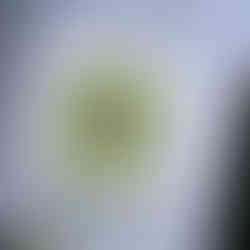Cozy the Forest Gardener
- savetheorangutans4
- Nov 6, 2018
- 4 min read
For those of you who know me well, you know I love to write. I write the odd blog. I write silly, sentimental poems for friends and family. I have written 14,000 words of a non-fiction book about my field work fails. But I also love to write children's stories based on my primatology work with a clear conservation message.
The first children's story I wrote was called "The Little Gibbon Who Lost His Song."

As with most book beginnings, I was inspired whilst living and working in the peat-swamp forests in Kalimantan, Indonesia. I was out in the forest recording wild gibbon behaviour for the Borneo Nature Foundation (BNF). I was really struggling to see the gibbons above my head. This would be normal for a novice following wild primates but not for me surely (a veteran? Yikes, that makes me sound old!). The reason we couldn't see them was not based on experience, it was actually due to smoke!
Every year, man-made and natural forest fires cause absolute devastation across Indonesia. Peat-swamp forest is particularly susceptible to forest fires.
'What is peat?' I hear you ask. Peat is a black, sludgy substance (much like mud) that is made up of partially decomposed plant matter which has been broken down in anaerobic (no oxygen), waterlogged conditions. Although it can be fun to play in, it is a mass store of carbon...so when it burns, it BURNS!

I don't like spoilers so you can read more about the incredible organisation, the fires, the story, and even buy a book off Amazon here. It ended up being an amazing team effort led by Suzi at BNF. Even David Attenborough supported it! You can check out his video here! #lifegoalachieved
One hundred percent of all funds raised from the book goes back into local education and conservation efforts.
Photo Credit: Borneo Nature Foundation
Armed with this experience, I thought back to 2008 when I had worked with a bunch of awesome people (Rita, Jess, Will and Jacqui, to name but a few) at a Jane Goodall Institute (JGI) in South Africa. Here, we cared for rehabilitated chimpanzees that had been rescued from the pet trade. They had picked up anthropomorphic (human-like) behaviours, and as a result, they could not be returned to their natural environment.
One particular face always used to make me smile. He had massive, protruding ears, and a huge grin. He was a chimpanzee called Cozy.

He was an adult male who had lived life as a circus performer. When he wasn't performing, he was cooped up in a caravan and forced to wear clothes that were too tight for him. He displayed signs of brain damage and would throw stones and sticks at ladies with blonde hair! (Possibly unrelated to the brain damage. Perhaps he preferred brunettes).
Jacqui, a zoo keeper and Roots and Shoots Ambassador from New Zealand, and I were moved by his story and decided to write about it and share his tale with children in the area. We teamed up with JGI and Roots and Shoots; the educational arm of JGI who's aim is to '...empower and encourage youth of all ages to pursue their passion, mobilize their peers, and become the leaders our world needs in order to ensure a better future for people, animals, and the environment.'
Writing a story about pet trade for children turned out to be a challenge! How do you breach such a delicate issue highlighting topics associated with death and animal torture?

We asked ourselves, "Should we be writing such a story? Can we create a balance between fun and informative without upsetting our readers?" We did our research and consulted a few teachers, a child psychologist, and the National Geographic education department who helped us edit the story. We juggled this not-for-profit project alongside our jobs.
One of the key and most exciting elements of the story is when Cozy realises he is an important seed disperser (hence the name, "Cozy the Forest Gardener"). Chimpanzees, along with other apes, mammals and birds, help maintain forest health by dispersing seeds in their poop away from the parent tree. We have them to partially thank for the oxygen we breathe!
We soon had our 1900-word story.
Our next challenge was funding. Both working in conservation, Jacqui and I had empty pockets. We launched a small crowdfunding campaign to cover the basic costs - thank you amazing backers! The aim is for all proceeds of the book to go towards local education in South Africa.

Next we had to find an artist who believed in the project. Due to the massive commitment, two came and went. Then suddenly Lena Nayashkova swung into our lives. A brilliant graphic designer and illustrator from Russia with 10 years' worth of experience under her belt. Lena is a fellow globetrotter having lived in Hanoi and Bangkok, so was no stranger to the animal pet trade (which is very prevalent in Vietnam and Thailand). She offered her professional services for free - something which we are extremely grateful for - which means we have more funds to buy books for children! You really should check out her work - I have some of her Japanese Darumas hanging on my wall!
*SPOILER ALERT*
I bet you're excited to see some of her mind-blowing illustrations for the book...
Artwork Credit: Lena Nayashkova
We are now in the final editing and printing stages. We recently made a pitch to a publishers - so fingers crossed! We are also waiting for a foreword written by Jane Goodall herself!
E: carolyn.thompson.17@ucl.ac.uk | T: @gibbonresearch | IG: gibbonresearch





















Comments